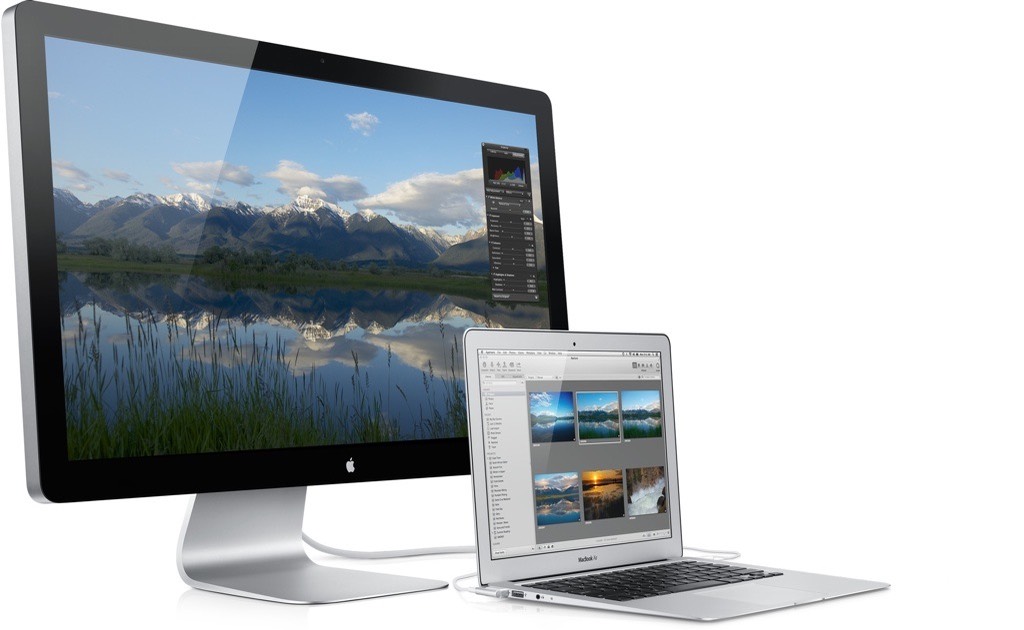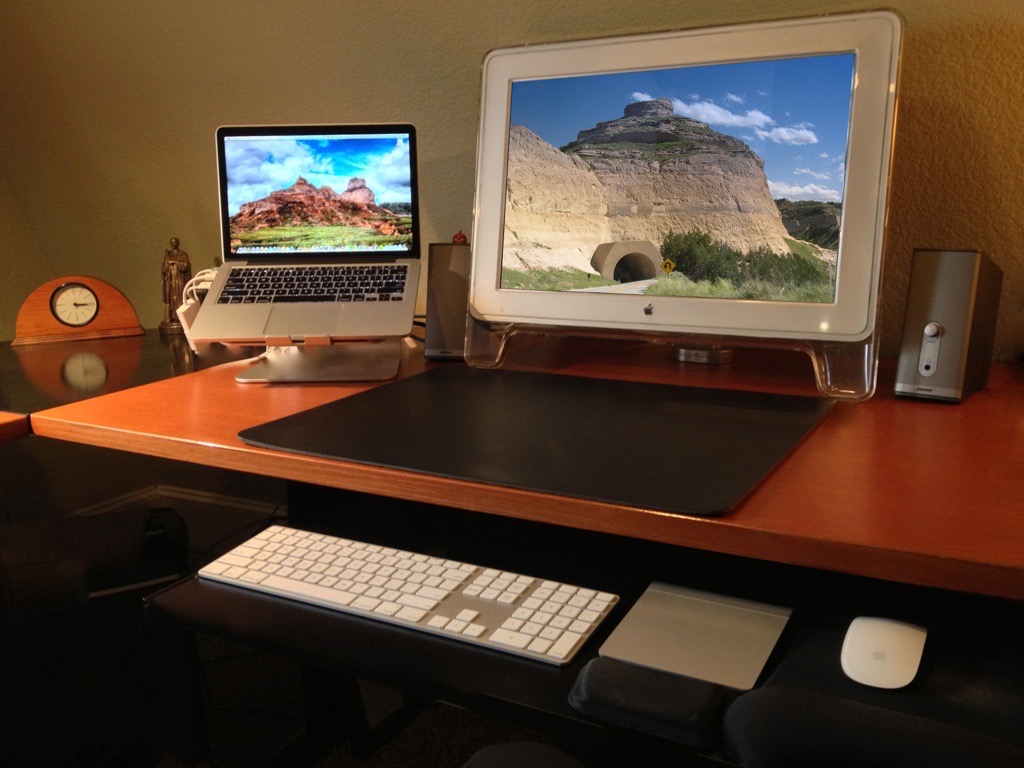
Want to attach a second display to your Mac? It’s easy… with these tips.
Connecting the displays
First, connect an external display to your laptop, iMac or Mac mini. All Macs from 2011 on use the Thunderbolt port. The Apple Thunderbolt 27" Display $999 is the perfect match for those Macs since it supports connecting peripherals to the display - keyboard, mouse, trackpad, printer, scanner, drives, network, even another additional display. You'll have just one cable to plug and unplug (plus power).
If a $1,000 display is a little out of your price range, you already have an extra display around, or you have an older Mac you can use another display… with the appropriate adapter.
Some displays support the DisplayPort cable. This Samsung 21.5” display for less than $200 has a DisplayPort - you just need a mini-DisplayPort to DisplayPort cable. Mini-DisplayPort uses the same size plug as Thunderbolt, and every Mac since 2008 has had one or the other. If your display supports the older DVI connection pick up a mini-DisplayPort to DVI adapter and a DVI cable. If all you have is a VGA cable, use a mini-DisplayPort to VGA adapter. But if that's all your monitor supports it may be better to replace it with a modern display that's much bigger, brighter and sharper.
Want to show your Mac’s screen on a TV? Use an HDMI cable (or mini-DisplayPort to HDMI adapter. Or better yet, connect an Apple TV box (starting at $69) to your TV and utilize built-in AirPlay to use your TV as a second display… wirelessly.
Changing display options
- Turn on the external display and connect it to your Mac. You should see a desktop picture.
- Click the Apple menu and choose System Preferences.
- Click Displays. A window appears on each display.
- Select Best for built-in display. If you don’t see this option, select the highest number in the resolution list. (Lower resolutions sacrifice clarity and waste your investment in a quality screen.) Repeat this on each display.
- Set the brightness to about 75%. If the option doesn’t appear in the window you might need to use buttons on the display itself. See the owners manual.
- If your display has a contrast control, set it to whatever makes one of Apple’s desktop photos look natural. You should see details in every area of the photo.
- On your main screen, click the Arrangement tab above.
- Drag the little display icons to match your physical layout. For example, if your laptop screen is sitting to the left of the secondary display on your desk, drag the icon for it to the left of the other display. If you placed your second display above the laptop, then drag its icon above the other. Fine-tune the arrangement until a window dragged from one display seems to line up with the other as closely as possible, creating a seamless desktop. It may not be possible to match them exactly because different displays show things at different sizes.
- Drag the tiny menubar icon to the display you will use the most. If your displays are stacked one on top of the other, drag the icon to the top display.
- Need to display the same thing on both displays? Click Mirror Displays.
- Close the windows.
If you have multiple displays, you’ll love the latest Mac OS X. Each display has its own menu bar for the apps on that particular screen and Mission Control spaces take full advantage of those displays.
Laptop options

You’ll probably find it most convenient to use both the built-in display and the external display at the same time. You might put your Mail windows on one display and leave the other free for working on documents. It's all up to you – just drag windows from one display to the other.
For a more ergonomic, desktop experience purchase a stand to raise the laptop to eye-level, then add a keyboard, trackpad or mouse. (Trackpads are more versatile with multi-touch gestures; mice give better control for drawing.)
When you’re ready to take your laptop away from the desk simply unplug the external display before you close the laptop lid. You'll notice all windows automatically move to the built-in display. Reconnect the external display and they return to their previous positions.
Can you use a laptop with only an external display? Yes, provided you also have an external keyboard, plus an external trackpad or mouse. Make sure they are paired (if wireless) or plugged into USB ports, then close the laptop lid. Press a key on the keyboard and the external display will light up with all windows ready to use.
But why disable the built-in display, which is often sharper and brighter than most external displays? Why forgo all the flexibility an extended desktop provides? Take advantage of the fact that you have multiple displays... and gloat at all those single-display users!